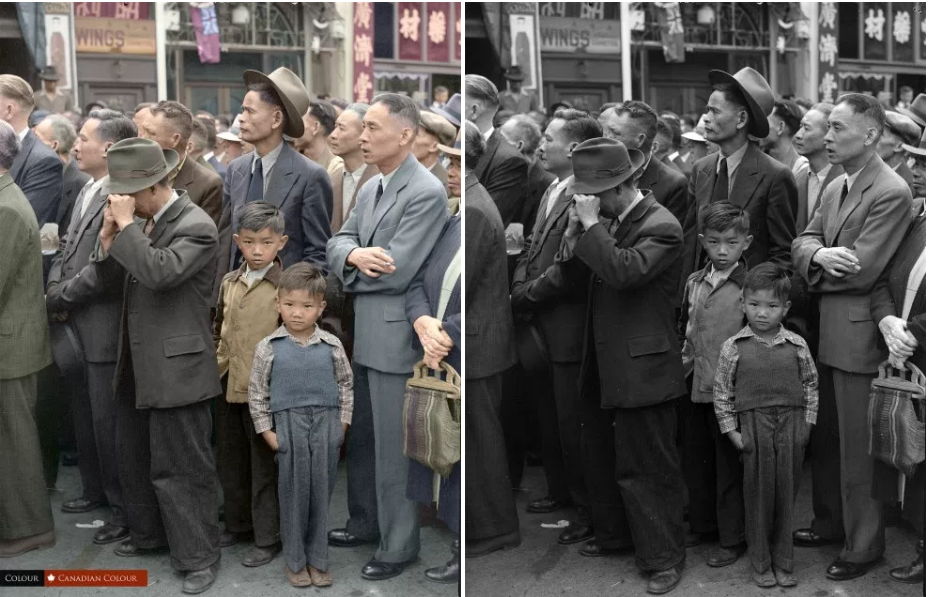
If you’re on social media you are likely already familiar with Canadian Colour–beautiful, eye-popping historical photographs of Vancouver’s people, buildings and events. The guy behind these colourized photos is Mark Truelove, a Brit who moved to B.C. 16 years ago, and now lives in Hope.
Mark’s day job is web designer/developer, but increasingly he’s doing colourization work for individuals and corporations.
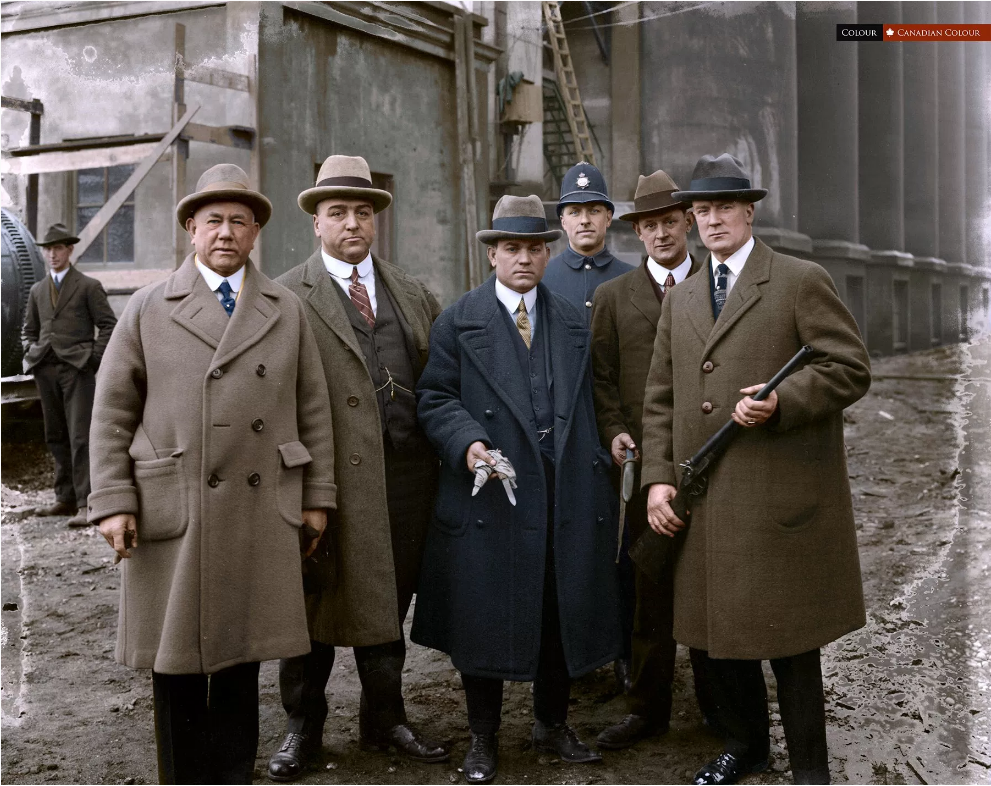
Lucky for us, he also colours photos for fun and then shares them via Facebook and Twitter.
“The colour erases a little bit of that barrier between us and history and I really like connecting with the regular people back then and I find the colourization helps me to do that,” he says.
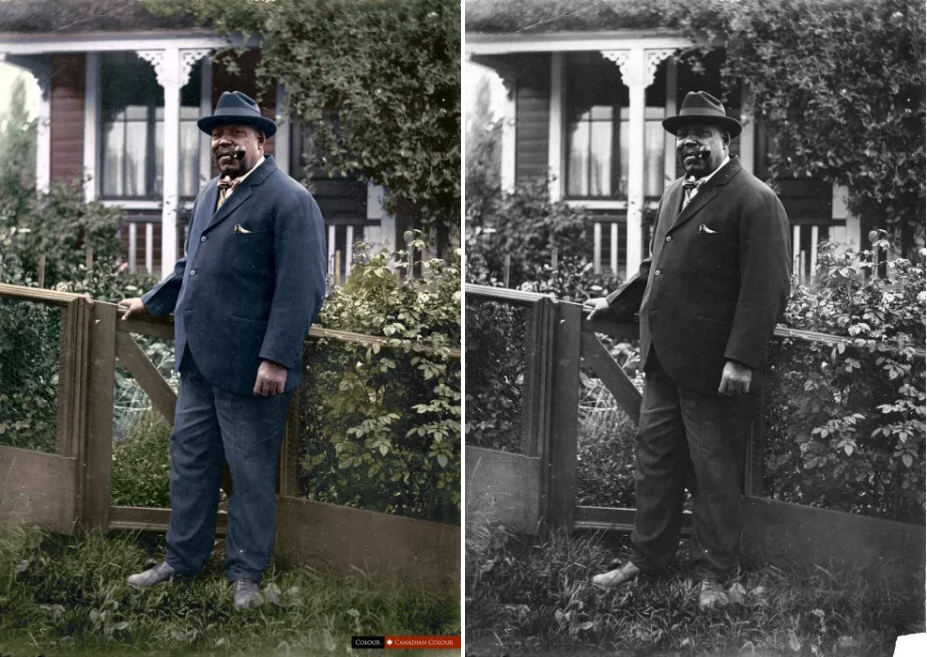
Mark has always been interested in history, and about five years ago, started to digitally colour old black and white photos from his family album.
When he ran out of those he went to Vancouver Archives.
One of his favourite finds is a photo of the Amputation Club of 1918. The club, which had offices in the Dominion Building, was formed shortly after World War 1 and is now known as War Amps.
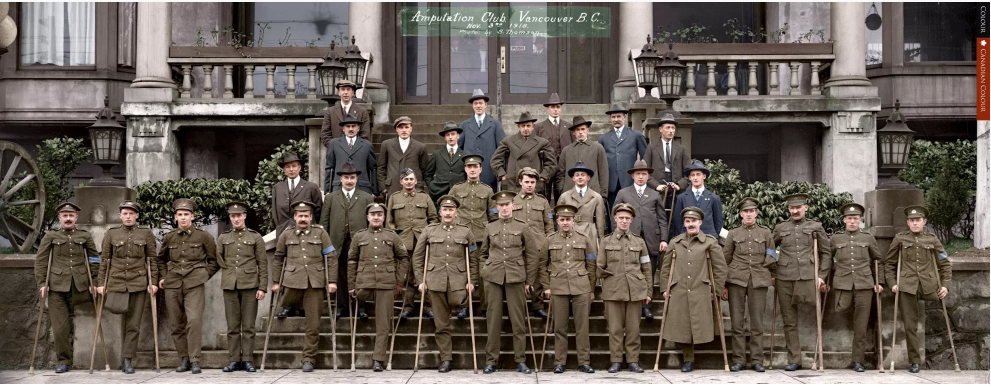
“That photo ticks my World War 1 interest box. I can see the connection between then and now with lots of soldiers coming back from Afghanistan or somewhere like that. Their hopes and dreams are going to be similar to the ones those guys have, so I see a connection across time.”
Another one of his favourites shows a crowd going about their morning outside the ABC coffee shop in Burnaby in the ‘40s.
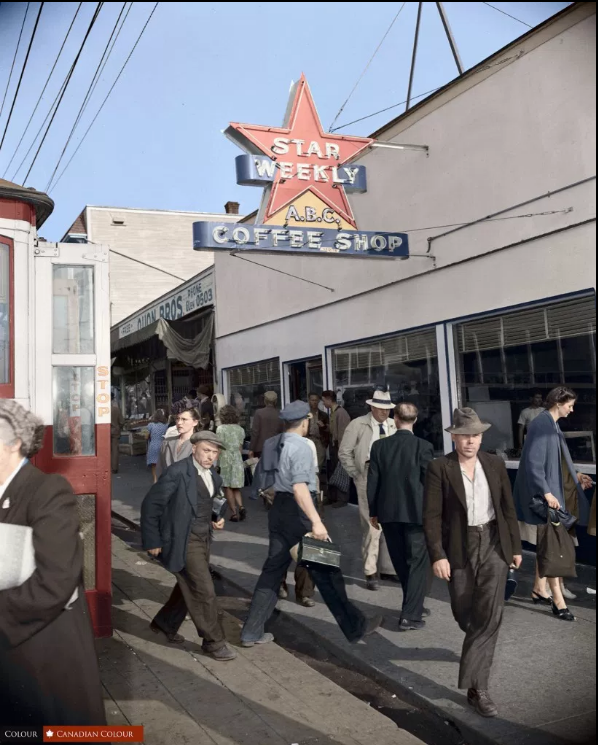
“I’m not so keen on doing famous people, I genuinely like photos that are of regular people doing regular things. It’s more just slices of life,” he says.
After Mark finds an archival photo that captures his attention he starts to research the period to find out the proper colour of everything from clothing to transit to sign posts. He often lands on blogs such as Past Tense, Illustrated Vancouver and Every Place has a Story where a local writer has already researched the history, such as his colourized photos of Joe Ricci and the Vancouver Police Department, Joe Fortes, and the Flying Seven.
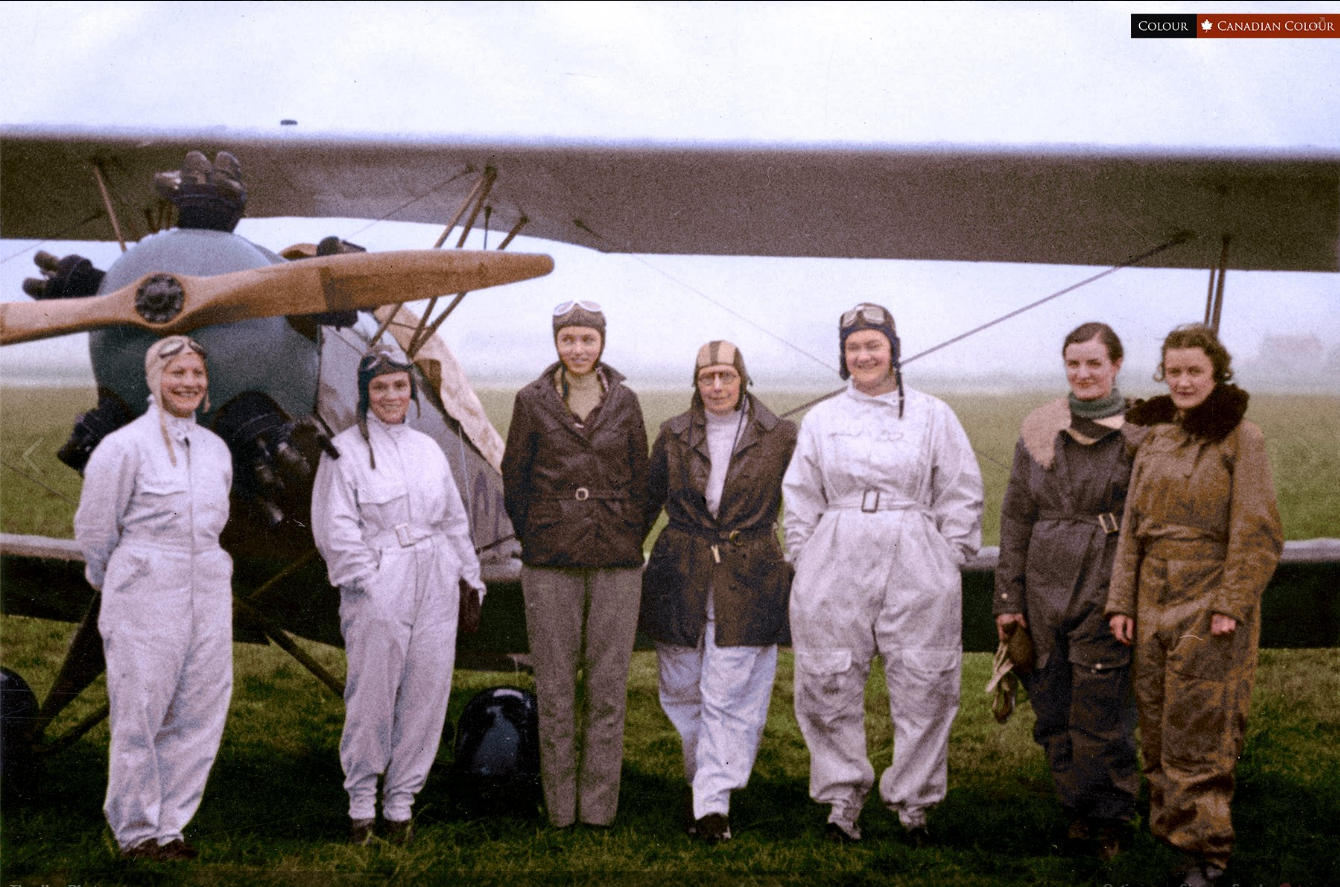
“Knowing those personal details really ties me to the photograph,” he says.
He starts by loading the black and white photograph in Photoshop. Then he adds layers of colour and then begins to define a “mask” for the layer which shows where to apply the colour on the image.
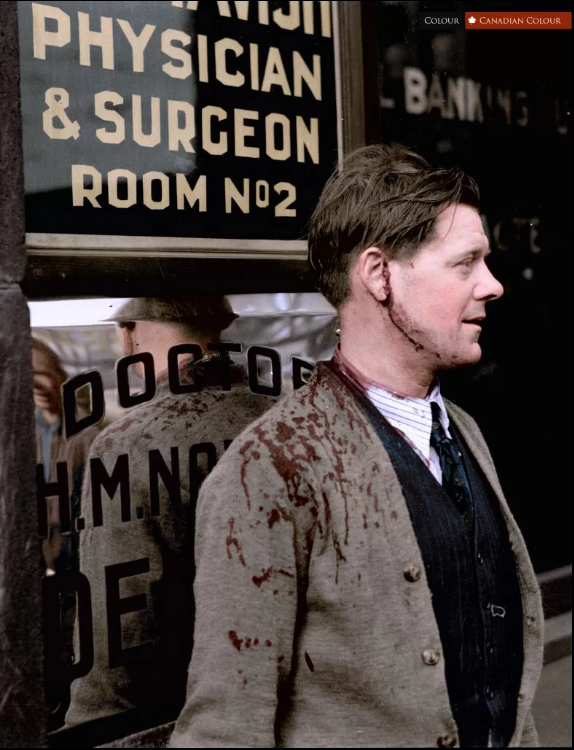
“If I am working on a portrait of somebody I would put on these coloured layers and I would mask it out so that colour only applies to the face,” he says. “If it was a guy in a suit, I would do another layer for his jacket, and for his waistcoat, shirt, tie and shoes.”
A portrait, he says, can take just an hour or two, whereas a photo with dozens of people and buildings and scenery can take upwards of 40 hours to complete.
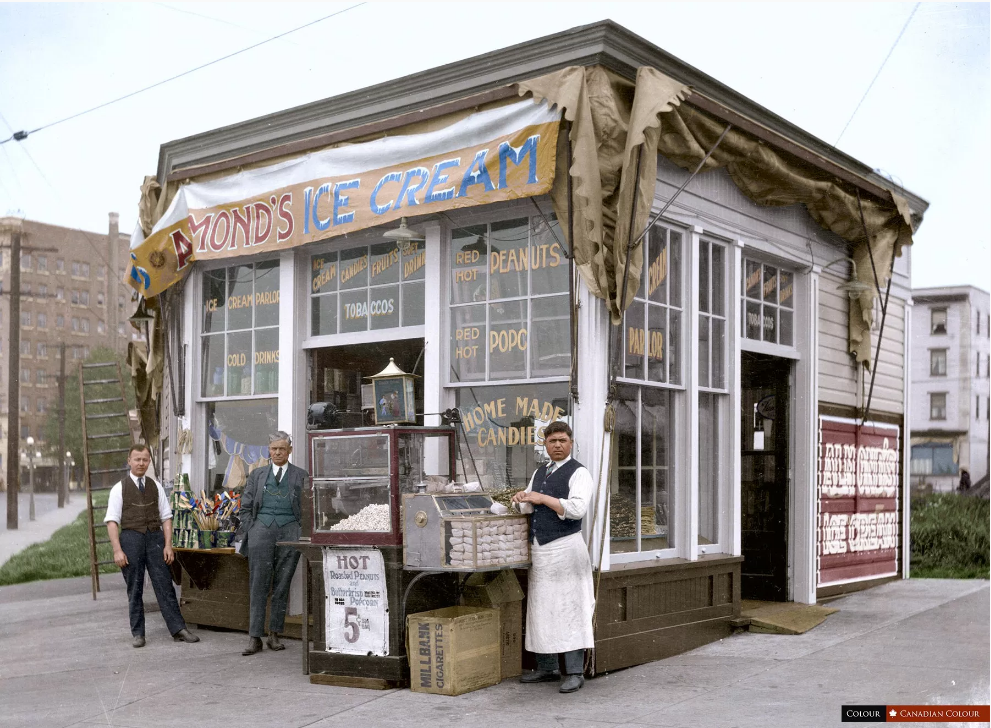
© All rights reserved. Unless otherwise indicated, all blog content copyright Eve Lazarus.




8 comments on “Colouring History”
Wow. Thanks, Eve. I am not usually a fan of colourization, but this chap does a marvellously subtle job.
These are fabulous and really bring the past into colourful view. His subtle colourizations are spot on.
Very well done. Believable.
This gentleman’s work looks very accurate. I have to admit Im not a fan of the art especially when it involves old movies. These examples are so good though they might cause many to embrace the change.
[…] Lazarus talks with Mark Truelove, the artist behind Canadian Colour, an effort to colourize historic photos. I love these […]
These are so vivid and bring the photographs to life as if the pictures were taken today. I have a number of old photograph/portraits which my grandmother left me. It would appear somebody ‘coloured’ them in the 1950’s. I would assume my grandparents thought the pictures were absolutely wonderful. Nothing in comparison though to today’s technology.
Really great! My baby photos were colorized!
[…] Firehall #2 on a training day in 1923. Vancouver Archives photo that really pops thanks to Canadian Colour […]